In this article, I am going to show you exactly how to create and implement an effective SEO strategy.
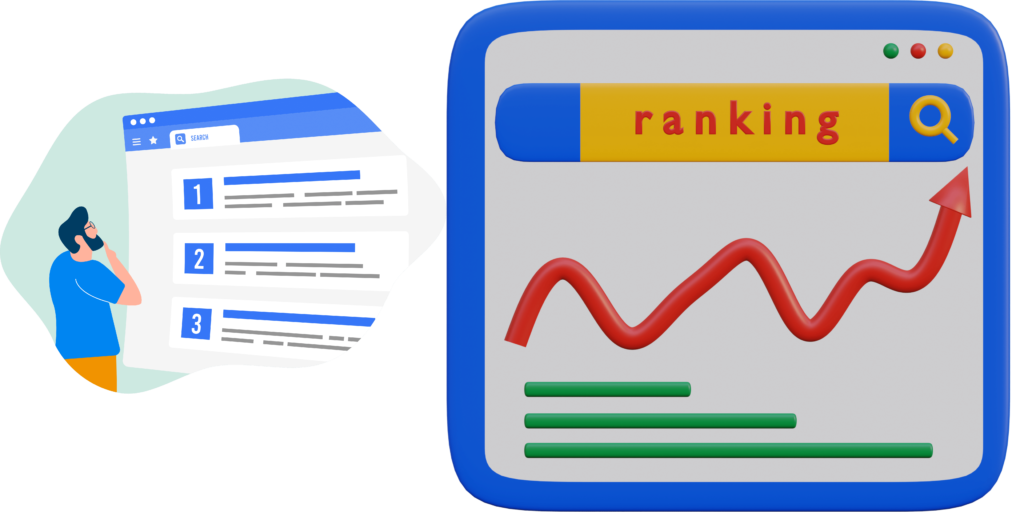
If you are a business or website owner and want to rank higher in SERPs (Search engine result pages).
You should have to read this guide.
Continue to read if you are a beginner.
In this guide I am going to discuss the 13 steps of creating an effective SEO strategy.
Why You need SEO On Your Site
Let’s discuss the reason for doing seo on your website. I have designed a infographic for you.
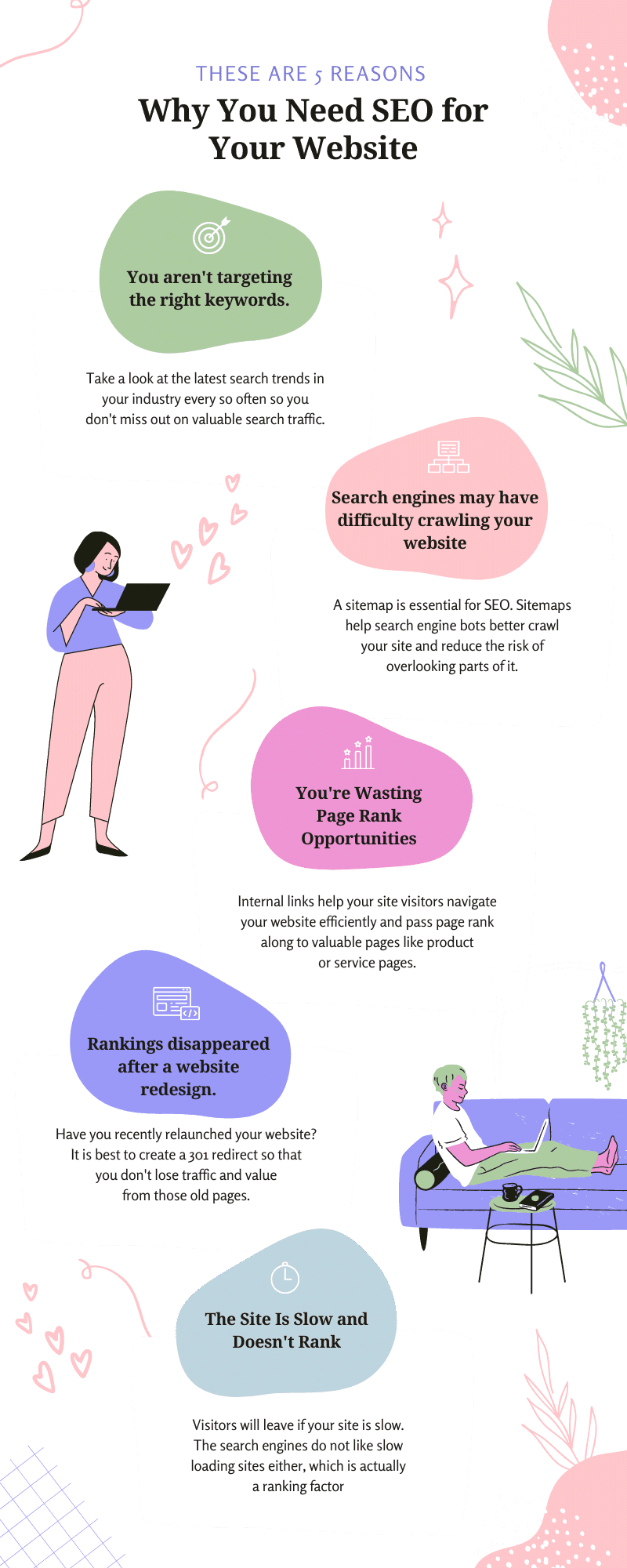
What is An SEO Strategy?
An SEO strategy is a plan or roadmap for improving your website’s search engine visibility and driving organic traffic to your site.
You can use a range of tactics and techniques designed to optimize various aspects of your website.

Website optimization has many things to include that’s why I will discuss all things related to an effective strategy.
I hope you understand let’s move on to the steps you should take to create an effective SEO strategy for your new website.
4 Types of SEO Strategies
Let’s discuss types of SEO Strategies with the beautiful infographic.
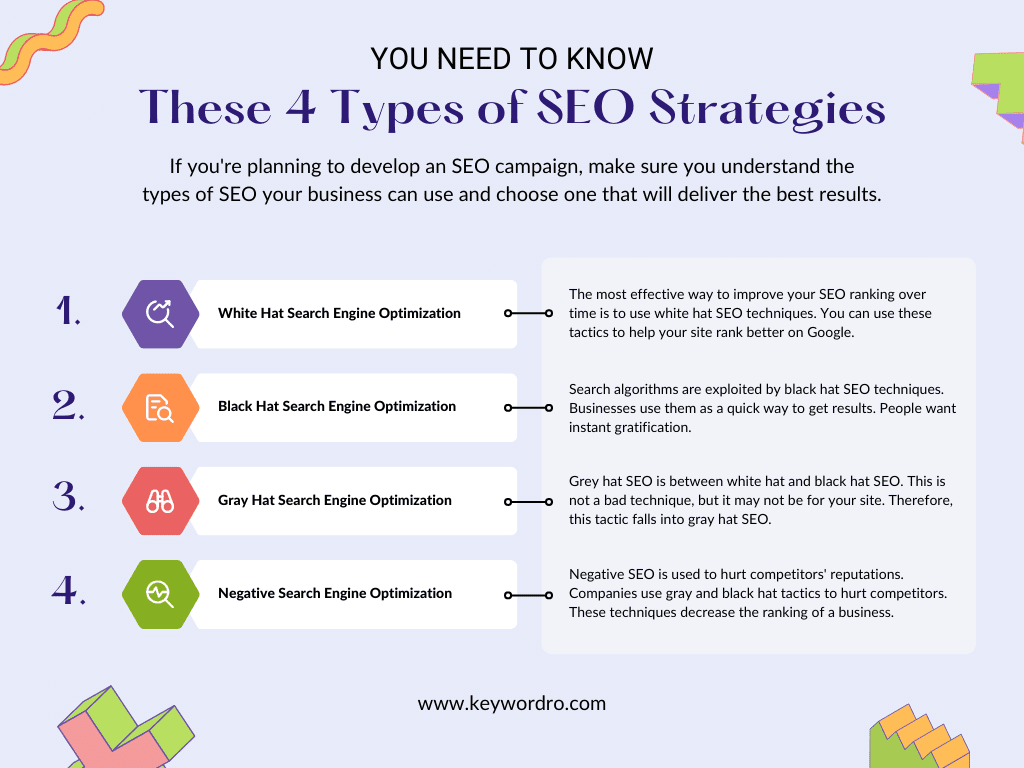
How to Create an SEO Strategy
Step #1: Define your goals
For Creating an SEO strategy you need to define your goals first.
WHY?
Because When you have clear goals you will be confident to do an effective SEO on your website.
Let’s suppose you want to increase your website traffic.
Then you might want to publish an article or blog post.
On the other hand.
If you want to increase your Sales.
You might want to publish an awesome Page.
Read this infographic for creating goals.

So these are the few things you should consider before starting your SEO strategy.
I hope you have chosen your goals.
Now let’s go the step 2.
Step #2: Perform Keyword Research
Keyword research is important in SEO. It helps you to know the search volume, SEO difficulty, and much more.

So if you want to grow online. Keyword research is the first step. Let’s take a look at how you can do keyword research. There are 3 steps I will discuss.
Google Search
Google search is the primary way of doing keyword research. So write your topic here.

It will show you autocomplete results.
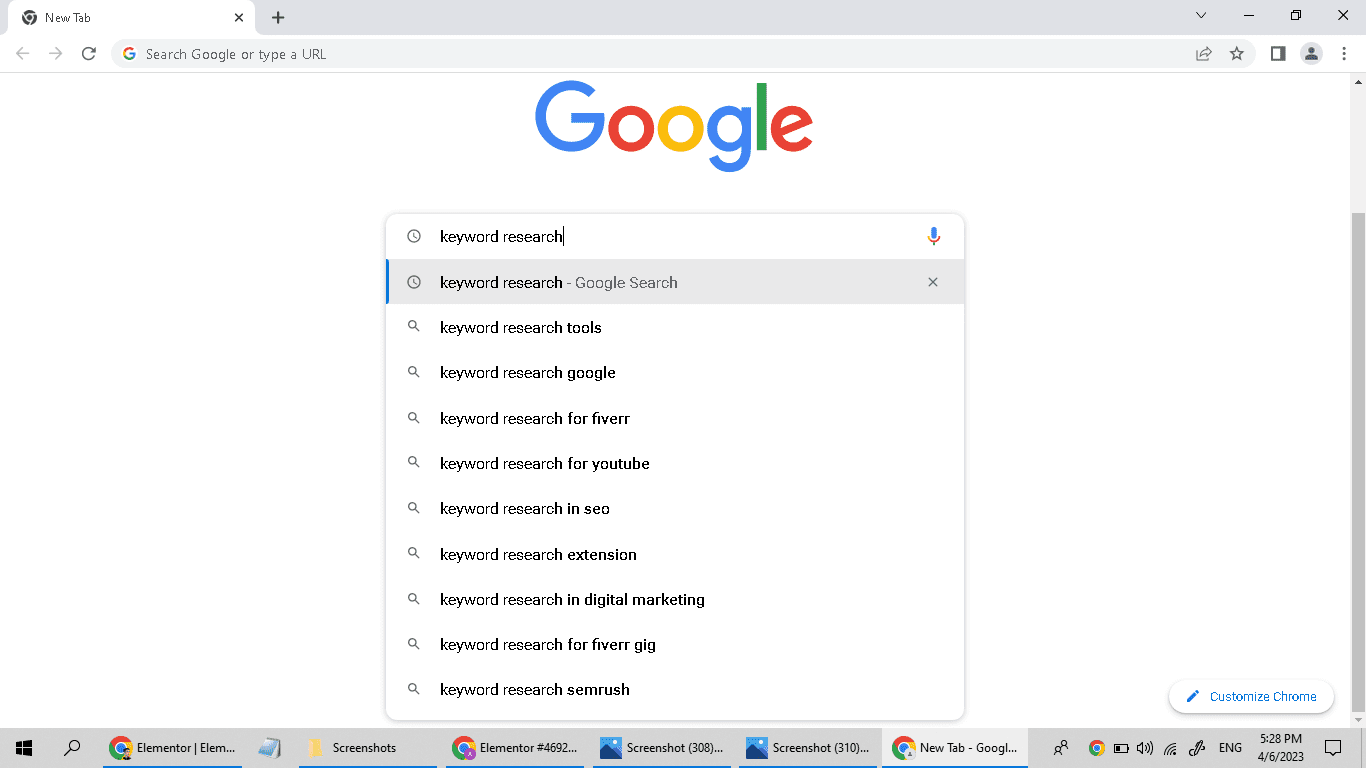
Note down those keywords in your list and click enter.
Then scroll down you will see the (People May Ask Section).

It gives you the idea that people are mostly asking these questions related to your topic. So note down them.
Now scroll down at the bottom of SERP. You will see the related queries section.
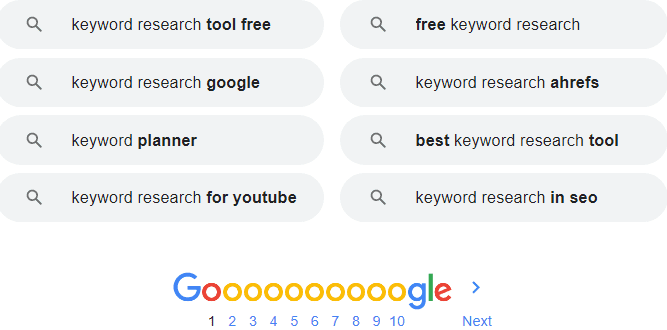
Here you will find the best ideas about your topic. Let’s move on to step 2 of keyword research.
Use UbberSuggest
UbberSuggest is the best keyword research tool that helps you a lot. So Simply type your topic here.

I mean the keywords that you listed before from Google search.
Then copy and paste each keyword here.
It will show you complete data about that keyword. I mean:
- Search Volume
- Keyword DIfficuilty
- CPC (Cost PerClick).

Then scroll down here you will see the Content Ideas section.

It will show you Google SERP’s first 10 results. You can take ideas from it. And also it will give the number of backlinks and social shares.
I mean the popularity of those ranking pages.
Now let’s further move to step 3.
Use Other Keyword research tools to find the data
You can find the most popular and the best tool on the internet. Here I will give you a list of keyword research tools that will help you a lot.
- Semrush
- Ahref
- Moz
- Google Keyword Planner
- Keywordtool.io
You can use it according to your budget and choice.
So now I hope you have enjoyed the second step. Let’s move on to step 3 of the SEO strategy.
Step #3: Analyze your competition
Competition analysis is the most effective part.

When you analyze your competition you will find the best opportunity to go ahead of your competitors.
BUT some people don’t know how actually you can do competition analysis.
Here is the deal.
Write your keyword in Google. Analyze the first 10 Results.
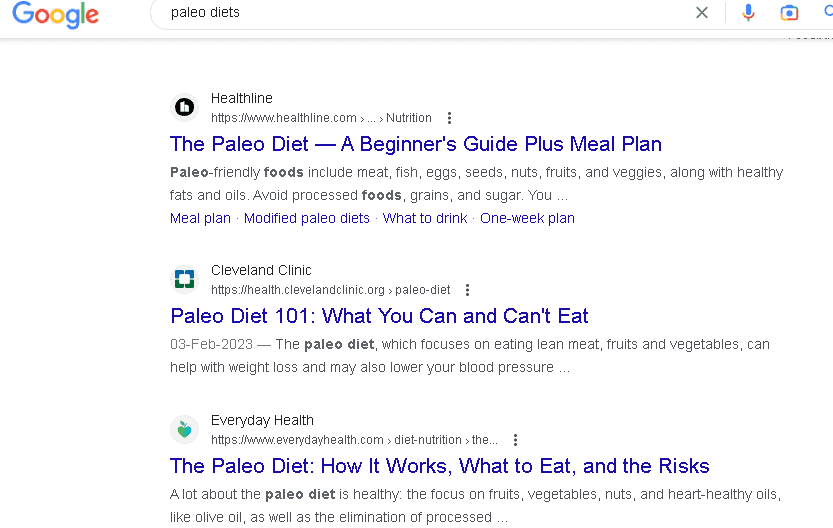
Let’s learn with steps.
1: Check their titles.
If you find all the pages have the same format. For example. If you see all pages have “How to” or “List” Posts.
Then you have to create content around these two formats.
In my example, I have searched the keyword “SEO Strategy”. I saw that the top 10 pages are covered with “How to” and “List” posts.

Now I have the opportunity to write content in these two formats. I hope you got the idea.
Now let’s move on to step 2 of competition analysis.
3: Open the First 3 websites and analyze them.
How and What?
- Analyse On-Page SEO.
- the URL and its length
- the Introduction and Hook
- headings and Subheadings
- Internal and External links
- words count
- the UX and UX design of the Content
- Images, visuals, charts, videos, and Graphics
- Table of content.
You have to analyze them and take an opportunity to write the best content from them. Now let’s move further.
4: Analyze Technical SEO
Technical SEO also is important when ranking on search engines like Google. You can see the technical issues on that particular website or page.
Copy the URLs and paste them into PageSpeedInsight.

It will show you the results.
If you find that those pages have good scores in this tool then you will have to optimize your page better than them.
Now I should recommend you to use these tools also.
Pingdom

GtMetric

Now you have to use the tool called SEOptimer.

It will give you a complete SEO Audit Report.
Now let’s move on to the last step of competitor analysis.
5: Analyze Off-Page SEO
In this section, you need to know the number of backlinks of your competitor.
REMEMBER to rank better than your competitors you need to be BETTER than them from all SEO perspectives.
For Checking backlinks you can use the tools. In my case, I am using the Moz Chrome extension which will help you a lot in analyzing the off-site SEO.

Now let’s move on to the 3rd step of SEO strategy.
Step #4: Create SEO Content Strategy
Now it’s time to create high-quality content.
For creating SEO content you have two different options.
Option 1: Create Something better
Options 2: Create something different
Why it’s important?
When you search for that keyword tell me how many results you see. There are thousands and millions of results.

Think why would you rank on the first page.
Off course for having better or different content from them.

So try to write high quality to stand out. Otherwise, you will be like millions of other results.
Let’s take a real-life example of the first option.
A few times ago I wanted to write content on “How to do keyword research in 5 minutes”.
I know it’s the long tail keyword but it has a good opportunity for me. So I analyzed my competitors and I saw that they have simple 500-1000 words per article.
So now I have the opportunity to create something better than them. So I created a complete Guide on “Keyword Research” and added my focused keyword in the title and heading.

Now I am ranking in 2nd position on the first page without getting any single backlink.
Step #5: Optimize your Content for getting backlinks
Backlinks are super important today. A recent study shows that backlinks are the third most important factor of Google.

When we talk about getting backlinks you need to create content that itself gets backlinks without creating them.
In this case, I should recommend you go back and see your competitor analysis.
In competition analysis when you have data about your competitors you probably have the backlinks report also.
Think why your competitors have those backlinks. So it’s time to write better content than them.
Add DATA, Visuals, and Charts
When you add DATA, VISUALS, and ChARTS to your content. They have the opportunity of getting backlinks.
When people see DATA in your content they will mention you in their posts.
Second Publish Ultime and Guides
When you have guides about the keyword or topic.

They will help you a lot.
WHY?
Because when you have a complete guide on that topic. When someone wants to add that keyword to their content they will link to you.
Why?
Because you have covered in depth topic. Let’s move on to the On-Page SEO strategy.
Step #6: Start On-Page SEO Optimization
Now after writing content it’s time to optimize your content for ranking.

It’s all about adding keywords naturally to your content. So here is the first step.
Optimize Titles
Title tags are a critical on-page SEO element, as they help search engines and users understand the content of a page. They also appear as clickable links in search results, making them a key factor in attracting clicks.
Here are a few things you should consider when optimizing titles.
1: Optimal length:
The recommended length for title tags is between 50-60 characters.
2. Keywords in title tags:
Including relevant keywords in the title tag can improve search engine rankings and increase click-through rates. However, it’s important to avoid keyword stuffing and focus on creating a compelling, informative title.
3: Unique title tags:
Each page on your website should have a unique title tag, as duplicate titles can lead to confusion for search engines and users.
4: Branding in title tags:
Including your brand name in the title tag can help increase brand recognition and improve click-through rates.
5: emotional language:
Using emotional language, such as power words or numbers, in the title tag can help grab the attention of users and improve click-through rates.
6: Testing and optimization:
Testing different title tags and optimizing for the best-performing titles can help improve search engine rankings and increase clicks.

Add Internal Links
Internal links help you to rank better in search engines. It helps you to build your backlinks profile.
How exactly can you add internal links? Here’s the deal.
A few times ago I published an SEO checklist guide.
In that guide, I have a section on keyword research. So I already have a guide on keyword research. So I added my link here.
Linking to another page within your website is called an internal link.
Pro tip
Add internal links naturally don’t try to stuff links.
Now let’s move on to the External Links.
Add External links to your content
External links also help you to rank better.
When you add external links to your content search engines will find that you are linking to high authority sites and it’s also good for user experience.
Pro Tips
Try to link to high-authority websites.
Use Keywords Before Heading
This is a step that you may not hear of before. But this is tested by our team. With this step, we ranked for short tail keywords without getting any single backlink.
A few times ago I published an article about “Fiverr keyword research”. And this is my primary keyword.
So when I added this keyword in my heading. And before heading I also added this keyword.
After a few weeks, I saw that I am ranking for this keyword. Could you believe it? Probably you not. But it’s true. In my case, this happened. That’s why I shared it with you.
USE LSI Keyword In Your Content
Search engine loves to rank content that has LSI keywords.
Let’s suppose you want to write an article on “SEO” Then you should add semantic keywords like this.
Google considers that this content has better knowledge than others.
Let’s take a real-life example.
A few times ago I had a website. I didn’t focus on its SEO.
WHY?
Because I didn’t know about the word SEO. So I wrote an article for a topic called “Benefits of sports blogging”.
So I added LSI keywords in the “Introduction” of the article.
I saw my page is ranking No:1 on Google for that particular keyword. I have zero backlinks and don’t know about SEO.
That’s the power of LSI keywords.
Use Short URLs
A recent study by backlinko said that short URLs tend to rank better than Long URLs.
Try to use short URLs. For example, when I published these articles I used two words in URLs.
Optimize Images
Search engines can’t see the images but they do understand the ALT text of images. Try optimizing your images by adding:
- ALT text
- Caption
- Title
- Try to Reduce image size.
Optimize heading and Subheadings
Do you know 80% of people read headings only?
Try to optimize your heading and subheading for users and search engines both. How?
- Add keyword naturally in your heading
- Try to give 80% answer within your headings
- Try to use long headings
I hope you got the idea.
Let’s go through the Search intent optimization.
Step #7: Search Intent Optimization Strategy
Search intent optimization is the process of optimizing a website or content to match the user’s search intent.
It involves analyzing the user’s search query and understanding what they are looking for so that you can provide the most relevant and useful content.
To optimize for search intent, you should:
- Conduct keyword research to identify relevant keywords and search terms.
- Analyze search results to understand what type of content is currently ranking for those keywords.
- Create high-quality, relevant content that meets the user’s search intent.
- Optimize your content for on-page SEO factors such as title tags, meta descriptions, and header tags.
- Use schema markup to provide additional context and information to search engines.
I hope you got the Idea. Let’s come to the content design strategy.
Step #8: Content Design Strategy
Content design is the noteworthy part of your page.

As we all know video content is in high demand.
WHY?
Because it has graphics, visuals, images, animations, etc.
That’s why it’s popular. And the popularity of blog posts like this is eventually decreasing.
WHY?
Think about yourself if you have seen content like this.
Tell me you will read this.
Of course, you will not.
So that’s why I also use Images, charts, and visuals in my content.
You can see my other articles here.


I don’t say that they are more attractive but they make sense. I bet you if someone comes to my website.
He/she will spend more than 1 minute on my website. These things will attract people more and more.
I don’t recommend you overuse visuals. Or win an award in design.
I invested zero money in these designs but it took me so long to design a single article.
Step #9: Start Off-Page SEO Campaign
A study shows that off-page SEO plays a more than 50% role in ranking.

But Here I would want to share with you a real-life example.
I ranked in the top 3 without having a single backlink. But for long-tail keywords.
Here are some steps you can take to create backlinks.
Getting backlinks through white hat SEO techniques involves earning links through legitimate methods that provide value to both the linking site and the site being linked to.
Here are some effective strategies for acquiring backlinks through white hat techniques:
Create high-quality content:
Develop informative, engaging, and shareable content that people will want to link to. This can include blog posts, infographics, videos, and other types of content that provide value to your audience.
Guest blogging:
Write guest blog posts for reputable sites in your industry. This can help you establish your expertise, increase your exposure, and earn valuable links back to your site.
Broken link building:
Identify broken links on reputable sites in your industry and reach out to the site owners, suggesting that they replace the broken link with a link to your relevant content.
Content promotion:
Promote your content through social media, email marketing, and other channels to increase its visibility and encourage others to link to it.
Influencer outreach:
Reach out to influencers and thought leaders in your industry and ask them to share your content or link back to your site.
Direct outreach:
Contact webmasters of relevant sites and offer them a guest post or a piece of content that would be valuable to their audience.
Participate in forums and online communities:
Share your expertise in relevant online communities and link back to your site when appropriate.
Step #10: Update Old Content
Updating old content is a powerful SEO strategy that can help improve the relevance, quality, and ranking of your website.
Here are some steps to follow when updating old content:

Conduct an audit:
Review your website and identify content that is outdated, inaccurate, or irrelevant. Determine which pages or posts have the potential to be updated and refreshed.
Analyze user behavior:
Use Google Analytics to identify which pages or posts are generating traffic and which ones are not. Determine which pages have high bounce rates or low engagement and need improvement.
Update the content:
Revise the content to make it more informative, accurate, and up-to-date. Add new information, remove outdated information, and make the content more engaging by adding visuals, videos, or other multimedia.
Optimize for keywords:
Use keyword research to identify new or relevant keywords and phrases to target. For this, you should use Google Search Console. Here you will see what people are searching for.
Optimize the content by including the keywords in the title, headings, body, and meta description.
Improve user experience:
Improve the design and layout of the page to make it more user-friendly and easy to navigate. Consider adding internal links to other relevant content on your site.
Republish and promote:
After updating the content, republish the page or post and promote it through social media, email marketing, and other channels to attract new visitors and generate more traffic.
Remember after updating your content you should do “Request indexing” in the Google search console because bots will revisit your page and see the latest content on your page. It will help you to rank fast.
Step #11: Take a look at the Technical SEO strategy
A technical SEO strategy is focused on improving the technical aspects of your website to enhance its search engine visibility and ensure it is accessible to both users and search engine bots.
You can read our latest blog on technical SEO.
See if your website has technical issues. Also, we have mentioned solutions to your problems.
Step #12: Promote Your Content
Content promotion is a critical component of any successful content marketing strategy.

It involves the use of various channels and tactics to increase the reach, visibility, and engagement of your content.
Here is a step-by-step guide to promoting your content effectively:
Identify your target audience:
Determine who your ideal customer is and where they spend their time online. This will help you tailor your content and promotion tactics to reach your target audience.
Choose the right channels:
Select the channels that are most likely to reach your target audience. This can include social media, email marketing, influencer outreach, paid promotion, and other tactics.
Use social media:
Share your content on social media platforms where your target audience is active. Optimize your posts with engaging headlines, images, and hashtags to increase visibility and engagement.
Utilize email marketing:
Send email newsletters to your subscribers with links to your latest content. Personalize your emails and segment your audience to improve open and click-through rates.
Reach out to influencers:
Identify influencers in your industry and reach out to them to promote your content. Build relationships with influencers by engaging with them on social media and sharing their content.
Use paid promotion:
Consider using paid promotion tactics such as social media advertising, Google Ads, or sponsored content to increase visibility and reach a broader audience.
Repurpose content:
Repurpose your content into different formats such as videos, infographics, or podcasts to reach a wider audience and increase engagement.
Measure your results:
Track your content promotion efforts using analytics tools to measure engagement, traffic, and conversion rates. Use the data to refine your strategy and improve your results over time.

Now let’s move on to the last step of SEO Strategy.
Step #13: Monitor and measure your results
Monitoring and measuring your results in SEO is critical to track the effectiveness of your optimization efforts and making data-driven decisions to improve your website’s visibility and ranking. Here is a step-by-step guide to monitor and measure your SEO results:
Define your goals:
Set clear and measurable goals for your SEO efforts. This could include increasing organic traffic, improving keyword rankings, or generating more leads or sales.
Track your keywords:
Use keyword tracking tools to monitor your keyword rankings over time. Track your target keywords and phrases to see how they are performing in search engine results pages (SERPs).
Use analytics tools:
Use analytics tools such as Google Analytics, Search Console, or other third-party tools to track your website’s traffic, user behavior, and other key metrics such as bounce rate, conversion rate, and click-through rate (CTR).
Monitor your backlinks:
Use backlink monitoring tools to track the quantity and quality of your website’s backlinks. Monitor for broken links, spammy links, or links from low-quality websites.
Analyze your data:
Regularly analyze your data to identify patterns, trends, and areas for improvement. Use data visualization tools to create reports that are easy to understand and share with stakeholders.
Conduct website audits:
Conduct regular website audits to identify technical issues, such as broken links, crawl errors, or page speed issues that could be affecting your website’s performance.
Adjust your strategy:
Use your data and insights to adjust your SEO strategy as needed. Refine your targeting, improve your content, or adjust your website’s structure or technical issues to improve your results.
SEO Strategy Case Study
Here is a brief case study of an SEO strategy for a fictional digital marketing agency:
Challenge: The agency was struggling to attract and retain clients due to high competition in the industry and a lack of a strong online presence.
Solution: A comprehensive SEO strategy was developed to improve the agency’s online visibility, attract more organic traffic, and generate leads.
Keyword research: A thorough keyword research was conducted to identify relevant keywords and phrases related to digital marketing services. The website’s content was optimized based on these keywords.
On-page optimization: On-page elements such as meta tags, URLs, and alt tags were optimized to improve relevance to target keywords and improve user experience. The website was also made mobile-friendly to improve the user experience on mobile devices.
Content creation: A blog section was added to the website to create content related to digital marketing services, including topics such as SEO, social media marketing, and email marketing. The content was optimized for target keywords to attract organic traffic.
Backlink building: A backlink-building strategy was developed to increase the website’s authority and credibility. This included building high-quality backlinks from relevant websites and online directories.
Local SEO: Local SEO techniques were implemented to target local businesses in the agency’s geographical area, including optimizing for local keywords and creating local business listings.
Social media promotion: The agency’s services and blog content were promoted on social media platforms to increase visibility and drive traffic to the site.
Results: The SEO strategy resulted in a significant increase in organic traffic and leads. The website’s ranking for target keywords improved, and the backlink-building strategy increased the website’s domain authority. The local SEO techniques helped to target local businesses, leading to an increase in local leads.
Overall, the comprehensive SEO strategy helped the digital marketing agency to improve its online presence, attract more organic traffic, and generate leads. This helped the agency to achieve its business goals and stand out from its competition in the industry.
Conclusion
I hope you enjoyed these steps. In the last, did you learn something from this 13 steps SEO Strategy guide? If yes leave a comment below and don’t forget to subscribe to our newsletter to get the latest information related to SEO.
